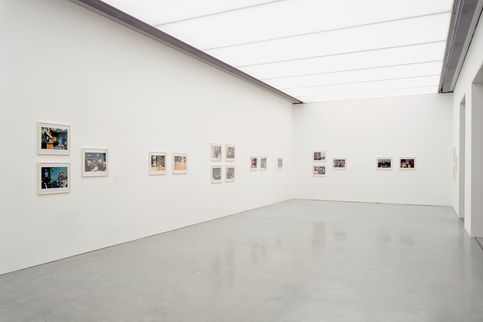Educational Complex
Guest Curator: Rainer Ganahl
Exhibition production: Daniela Stern
Works by Lindsay Anderson, Rainer Ganahl, Candida Höfer, Mike Kelley, Frederick Wiseman.
The exhibition thematized the field of education, training, intellectuals and their institutions. Ganahl attributed these areas of our society - which are hardly ever represented in art - with an especially significant and political meaning. The intellectualization of art along with the overlapping of art and (academic) discourses, plays a role in this context, as does the question of the medium of the exhibition itself. Ganahl's concept was to be read as neither solo nor group show, but a combination of the two. His works, which took up most of the exhibition space, were juxtaposed by a relatively small number of works and films by other artists ranging from visual artists to feature and documentary filmmakers.
On the basis of his own artistic practice, Rainer Ganahl (A/USA) resolved to try his hand at a type of "representation of intellectuals" in the "S/L" (Seminars/Lectures) series, 1995-1996. He photographed - from the perspective of an involved participant - those lecturers who interested him, in and along with their professional environment. As a contrast, Candida Höfer (Germany) represents the institutions, including universities and libraries, in "photo-realist" style. In "Dialogue # 1 (An Excerpt from Theory, Garbage, Stuffed Animals, Christ)" 1991, by Mike Kelley (U.S.A.), two plush animals are engaged in a conversation reflecting on the role which theory plays in Kelley’s works. Frederick Wiseman (U.S.A.) created socio-critical documentaries about institutions, which were in part subject to censure. "High School" (1968), "High School II" (1994), and "Blind" (1986), are specifically concerned with educational institutions. In his legendary movie "If…" (1968), Lindsay Anderson (GB) paints a devastating picture of the British public-school system, which he uses as a metaphor for society in general.
"Educational Complex" was an exhibition in which Rainer Ganahl attempted to visit the precise locus where the art context finds its hated Other: education, training, and the institutions associated with them. The title of the exhibition intends to evoke both an individual and a structural reading. It refers to an eponymous work by Mike Kelley, who, in "Educational Complex," made from memory models of all the schools he had ever attended.



